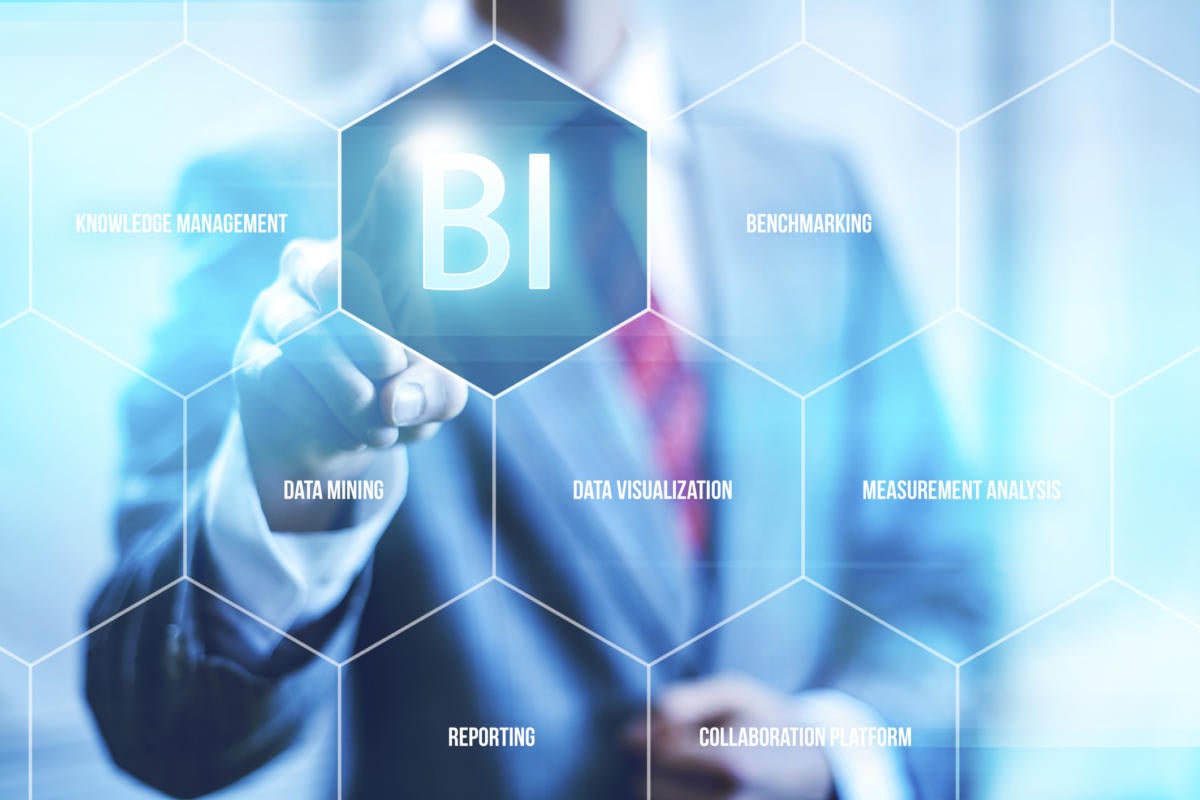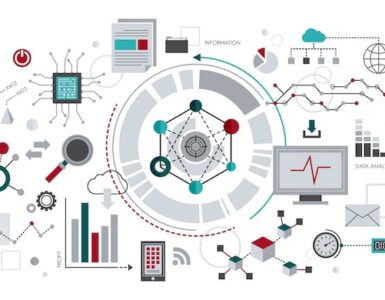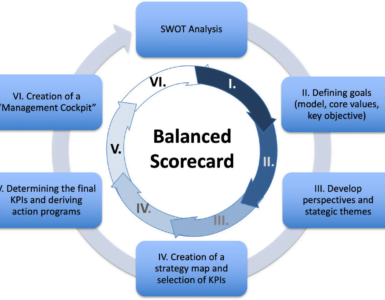
Contents
Business intelligence definition
Business intelligence (BI) leverages software and services to transform data into actionable insights that inform an organization’s strategic and tactical business decisions. BI tools access and analyze data sets and present analytical findings in reports, summaries, dashboards, graphs, charts and maps to provide users with detailed intelligence about the state of the business.
The term business intelligence often also refers to a range of tools that provide quick, easy-to-digest access to insights about an organization’s current state, based on available data.
Business intelligence examples
Reporting is a central facet of business intelligence and the dashboard is perhaps the archetypical BI tool. Dashboards are hosted software applications that automatically pull together available data into charts and graphs that give a sense of the immediate state of the company.
Although business intelligence does not tell business users what to do or what will happen if they take a certain course, neither is BI solely about generating reports. Rather, BI offers a way for people to examine data to understand trends and derive insights by streamlining the effort needed to search for, merge and query the data necessary to make sound business decisions.
For example, a company that wants to better manage its supply chain needs BI capabilities to determine where delays are happening and where variabilities exist within the shipping process, says Chris Hagans, vice president of operations for WCI Consulting, a consultancy focused on BI. That company could also use its BI capabilities to discover which products are most commonly delayed or which modes of transportation are most often involved in delays.
The potential use cases for BI extend beyond the typical business performance metrics of improved sales and reduced costs, says Cindi Howson, research vice president at Gartner, an IT research and advisory firm. She points to the Columbus, Ohio, school system and its success using BI tools to examine numerous data points — from attendance rates to student performance — to improve student learning and high school graduate rates.
BI vendors Tableau and G2 also offer concrete examples of how organizations might put business intelligence tools to use:
- A co-op organization could use BI to keep track of member acquisition and retention.
- BI tools could automatically generate sales and delivery reports from CRM data.
- A sales team could use BI to create a dashboard showing where each rep’s prospects are on the sales pipeline.
Business intelligence vs. business analytics
One thing you will have noticed from those examples is that they provide insights into the current state of the business or organization: where are sales prospects in the pipeline today? How many members have we lost or gained this month? This gets to the key distinction between business intelligence and another, related term, business analytics.
Business intelligence is descriptive, telling you what’s happening now and what happened in the past to get us to that state. Business analytics, on the other hand, is an umbrella term for data analysis techniques that are predictive — that is, they can tell you what’s going to happen in the future — and prescriptive — that is, they can tell you what you should be doing to create better outcomes. (Business analytics are usually thought of as that subset of the larger category of data analytics that’s specifically focused on business.)
The distinction between the descriptive powers of BI and the predictive or descriptive powers of business analytics goes a bit beyond just the timeframe we’re talking about. It also gets to the heart of the question of who business intelligence is for. As the Stitchdata blog explains, BI aims to deliver straightforward snapshots of the current state of affairs to business managers. While the predictions and advice derived from business analytics requires data science professionals to analyze and interpret, one of the goals of BI is that it should be easy for relatively non-technical end users to understand, and even to dive into the data and create new reports.
For more, see “Business intelligence vs. business analytics: Where BI fits in your data strategy.”
Business intelligence strategy
In the past, IT professionals had been the primary users of BI applications. However, BI tools have evolved to be more intuitive and user-friendly, enabling a large number of users across a variety of organizational domains to tap the tools.
Gartner’s Howson differentiates two types of BI. The first is traditional or classic BI, where IT professionals use in-house transactional data to generate reports. The second is modern BI, where business users interact with agile, intuitive systems to analyze data more quickly.
Howson explains that organizations generally opt for classic BI for certain types of reporting, such as regulatory or financial reports, where accuracy is paramount and the questions and data sets used are standard and predicable. Organizations typically use modern BI tools when business users need insight into quickly changing dynamics, such as marketing events, in which being fast is valued over getting the data 100 percent right.
But while solid business intelligence is essential to making strategic business decisions, many organizations struggle to implement effective BI strategies, thanks to poor data practices, tactical mistakes and more.
For more, see “7 keys to a successful business intelligence strategy” and “9 ways you’re failing at business intelligence.”
Self-service business intelligence
The drive to make it possible for just about anyone to get useful information out of business intelligence tools has given rise to self-service business intelligence, a category of BI tools aimed at abstracting away the need for IT intervention in generating reports. Self-service BI tools enable organizations to make the company’s internal data reports more readily available to managers and other nontechnical staff.
Among the keys to self-service BI success are business intelligence dashboards and UIs that include pull-down menus and intuitive drill-down points that allow users to find and transform data in easy-to-understand ways. A certain amount of training will no doubt be required, but if the advantages of the tools are obvious enough, employees will be eager to get on board. (If you’re shopping for a self-service BI solution, CIO.com’s Martin Heller walks you through the decision making process and compares his top five choices.)
Keep in mind, though, that there are pitfalls to self-service BI as well. By steering your business users into becoming ad hoc data engineers, you can end up with a chaotic mix of metrics that vary across departments, run into data security problems, and even run up big licensing or SaaS bills if there’s no centralized control over tool rollout. So even if you are committing to self-service business intelligence within your organization, you can’t just buy an off-the-shelf product, point your staff to the UI, and hope for the best.
Business intelligence software and systems
A variety of different types of tools fall under the business intelligence umbrella. The software selection service SelectHub breaks down some of the most important categories and features:
- Dashboards
- Visualizations
- Reporting
- Data mining
- ETL (extract-transfer-load —tools that import data from one data store into another)
- OLAP (online analytical processing)
Of these tools, SelectHub says the dashboards and visualization are by far the most popular; they offer the quick and easy-to-digest data summaries that are at the heart of BI’s value proposition.
There are tons of vendors and offerings in the BI space, and wading through them can get overwhelming. Some of the major players include:
- Tableau, a self-service analytics platform provides data visualization and can integrate with a range of data sources, including Microsoft Azure SQL Data Warehouse and Excel
- Splunk, a “guided analytics platform” capable of providing enterprise-grade business intelligence and data analytics
- Alteryx, which blends analytics from a range of sources to simplify workflows as well as provide a wealth of BI insights
- Qlik, which is grounded in data visualization, BI and analytics, providing an extensive, scalable BI platform
- Domo, a cloud-based platform that offers business intelligence tools tailored to various industries (such as financial services, health care, manufacturing and education) and roles (including CEOs, sales, BI professionals and IT workers)
- Dundas BI, which is mostly used for creating dashboards and scorecards, but can also do standard and ad-hoc reporting
- Google Data Studio, a supercharged version of the familiar Google Analytics offering
- Einstein Analytics, Salesforce.com’s attempt to improve BI with AI
- Birst, a cloud-based service in which multilple instances of the BI software share a common data backend.
For a deeper look at today’s most popular business intelligence systems, see “Top 12 BI tools of 2019” and “Top 10 BI data visualization tools.”
Business intelligence analyst
Any company that’s serious about BI will need to have business intelligence analysts on staff. CIO.com has an in-depth article on what that job entails; in general, they aim to use all the features of BI tools to get the data that companies need, the most important being discovering areas of revenue loss and identifying where improvements can be made to save the company money or increase profits.
Even if your company relies on self-service BI tools on a day-to-day basis, business intelligence analysts have an important role to play, as they are necessary for managing and maintaining those tools and their vendors. They also set up and standardize the reports that managers are going to be generating to make sure that results are consistent and meaningful across your organization. And to avoid garbage in/garbage out problems, business intelligence analysts need to make sure the data going into the system is correct and consistent, which often involves getting it out of other data stores and cleaning it up.
Business intelligence analyst jobs often require only a bachelor’s degree, at least at the entry level, though to advance up the ranks an MBA may be helpful or even required. As of October 2019, the median business intelligence salary is around $67,500, though depending on your employer that could range from $49,000 to $94,000.
The future of business intelligence
Moving ahead, Howson says Gartner sees a third wave of disruption on the horizon, something the research firm calls “augmented analytics,” where machine learning is baked into the software and will guide users on their queries into the data.
“It will be BI and analytics, and it will be smart,” she says.
The combinations included in these software platforms will make each function more powerful individually and more valuable to the businesspeople using them, Gorman says.
“Someone will look at reports from, for example, last year’s sales — that’s BI — but they’ll also get predictions about next year’s sales — that’s business analytics — and then add to that a what-if capability: What would happen if we did X instead of Y,” Gorman says, explaining that software makers are moving to develop applications that will provide those functions within a single application rather than delivering them via multiple platforms as is now the case.
“Now the system delivers higher-value recommendations. It makes the decision-maker more efficient, more powerful and more accurate,” he adds.
And although BI will remain valuable in and of itself, Howson says organizations can’t compete if they’re not moving beyond only BI and adopting advanced analytics as well.
In fact, Gartner’s Magic Quadrant report predicts that by 2020 organizations offering “users access to a curated catalog of internal and external data will realize twice the business value from analytics investments than those that do not.”
Howson adds: “There is a need for reporting, but reporting alone is not enough. If you’re only doing reporting you’re behind already. Unless your reporting is smart and agile, you’re behind. You’re a laggard.”
[“source=cio”]





















































